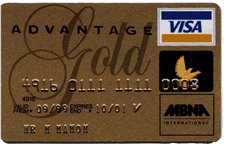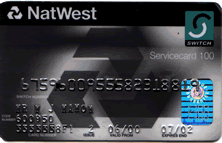These pages explain:
-
What plastic cards are
-
Types of cards
-
How to accept a payment by card
-
How to use a deal with invalid card or fraulent situation
Security and cardsPlastic Cards are rapidly becoming the most common form of payment and challenging cash as the main form of payment. Ease of use, the ease of obtaining a card and the advantage of not having to carry around large amounts of cash are the main reasons for the growth in their use.
Set against a background of working in the Hospitality industry, these pages aim to help you accept payments by card
Whilst different organisations have different policies and procedures, general rules are still useful to learn and apply.
A plastic card is a record of information that allows the bearer to charge goods and services to an account rather than paying cash.
Plastic cards are issued by financial institutions such as Banks, Building and Saving Societies, and various others organisations and stores.
People use cards rather than carry around large quantities of cash because of the reduced security risk.
There are numerous forms of card, though the Market is dominated by a dozen or so major Brands.
back to top of page
Credit
Cards
enable the holder to  borrow
money to purchase goods and services. The money deducted from the account
acts as a loan on which the holder has to pay interest and can repay in
monthly installments. Examples of credit cards are Visa and Mastercard
borrow
money to purchase goods and services. The money deducted from the account
acts as a loan on which the holder has to pay interest and can repay in
monthly installments. Examples of credit cards are Visa and Mastercard
a Visa Card
Debit
Cards enable the holder to charge the goods and  service
to their own account, often a current bank account, in the same way a
cheque would be used.Examples are Switch, Maestro, Cirrus, Link, Connect,
Delta etc.
service
to their own account, often a current bank account, in the same way a
cheque would be used.Examples are Switch, Maestro, Cirrus, Link, Connect,
Delta etc.
a Switch card - debit - note this card can also act as a cheque guarantee card
Charge Cards give the holder the ability to charge to an account, but this must be cleared at the end of each month.Examples are American Express and Diner's Club.
In most cases to accept a card the customer must simply produce a matching signature, unless the amount of the payment exceeds the card or floor limit. This will show the upper limit to which the card can be drawn. In other words the bank or financial institution will not make payment unless a special authorisation is made.
Suggested procedure for taking a card payment:
- Issue the bill.
- Is the card one the establishment accepts
- Imprint the voucher (check details are clear on copies) or swipe the card the the PDQ terminal.
- Hold the card. Rub the signature strip to check for signs of tampering oe alterartion.
- If the card is unsigned, phone the card company or notofy a supervisor, do NOT as the customer to sign.
- Ask
the customer to sign the voucher, keeping the signature on the card
out of the customers sight.
- Check the signature matches that on the card. Do not ask the customer to sign again if you are suspicious!
- Check the name and and account match voucher or print out.
- Check the amount in figures and in writing is correct and does not exceed the card limit.
- Check the card is valid.
- Check the card with the warning (cancelled and invalid) list (if you have one!)
- If the amount is over the floor limit seak authorisation from the card company.
- Place the voucher or print out in the till drawer
- Give the customer back their card, copy of voucher or print out and receipt as appropriate.
Suggested procedure for dealing with an invalid or suspicious card transaction:
- Telephone as if for authorisation
- State "this is a code 10 authorisation"
- Answer the questions with a yes/no and follow instructions.
- Generally the rule is to retain card and to apologise to the customer for delay without raising hostility or suspicion.
Security and cheques
back to top of page
There are risks involved in any form of payments: cheques are no exception. These can be minimised by:
Checking the identity of the drawer
Checking the card and account are valid
Following the procedures for accepting cheques
Asking the customer to write their name and address on the back of the cheque - in some cases customers may be allowed to pay higher amounts than the guarantee card allows in which case this procedure is particularly advisable.
If the cheque card or account shows up on a withdrawn list then follow procedures usually:
1. Retain the invalid card
2. Inform your supervisor
3. Tactfully inform the customer or if fraud is suspected contact the police attempting to detain the client without arousing suspicion.